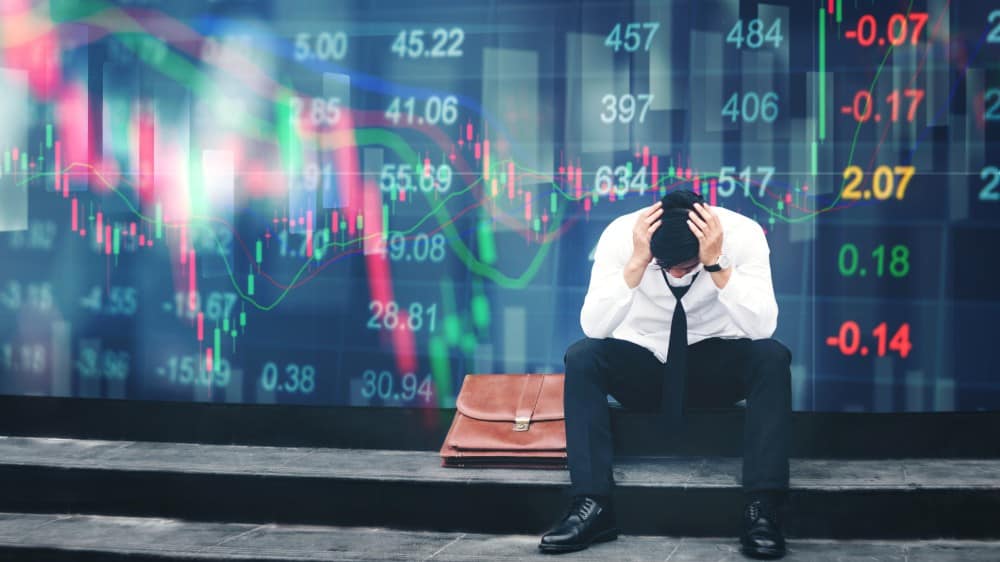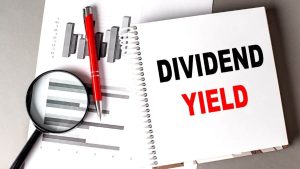History has taught me that sky-high prices produce fragile markets. Hence, as asset prices soared to new heights in 2021, I grew increasingly concerned about the risk of a stock market crash. When share prices fall 20%+ from their previous high, this is a crash (also known as a bear market). When post-peak stock prices fall by 10%-20%, this is a ‘correction’. Here are five early-warning signs from 2022 that make me nervous about further price falls.
1. The S&P 500 dived in January
The S&P 500 — the main US stock market index — dipped into correction territory last month. On 4 January, the index hit an all-time high of 4818.62 points. By 24 January, it had slumped as low as 4,222.62, down 12.4% and into correction territory. Following its worst January since 2009, the S&P 500 currently stands at 4,504.08, down 6.5% from its peak. For a full-blown stock market crash, the index would have to fall below 3854.90 points. That’s under 650 points (-14.4%) from here.
5 Stocks For Trying To Build Wealth After 50
Markets around the world are reeling from the coronavirus pandemic… and with so many great companies trading at what look to be ‘discount-bin’ prices, now could be the time for savvy investors to snap up some potential bargains.
But whether you’re a newbie investor or a seasoned pro, deciding which stocks to add to your shopping list can be a daunting prospect during such unprecedented times.
Fortunately, The Motley Fool UK analyst team have short-listed five companies that they believe STILL boast significant long-term growth prospects despite the global upheaval…
We’re sharing the names in a special FREE investing report that you can download today. And if you’re 50 or over, we believe these stocks could be a great fit for any well-diversified portfolio.
2. The Nasdaq nearly had a stock market crash
The tech-dominated Nasdaq Composite index performed even worse than the S&P 500. On 22 November 2021, the Nasdaq hit a record high of 16,212.23 points. Two months later, it collapsed as low as 13,094.65 on 24 January. That’s a slump of 19.2% — within a mere whisker (125 points) of a full-blown stock market crash for the Nasdaq. As I write, the index stands at 14,185.64, down an eighth (-12.5%) from its November 2021 peak. Thus, it’s not difficult to imagine the Nasdaq entering a bear market at some point in 2022.
3. Stock market crash: volatility has soared
In 2020-21, governments and central banks pumped a tsunami of liquidity into financial markets. And high liquidity usually leads to low volatility. However, with this liquidity being withdrawn over 2022, volatility has spiked recently. This pattern is often seen at the start of stock market crashes. For example, in 28 trading days so far in 2022, high-low daily volatility for the S&P 500 has been below 1% on only five days. On 11 days, it’s been over 2% and it peaked at 4.6% on 24 January. Likewise, the CBOE Volatility Index (also know as the VIX volatility index) currently stands at 24.22 and hit its 2021-22 peak of 38.94 on 24 January. A normal range for the VIX is around 13 to 19, so it’s been highly elevated in 2022.
4. US bid-offer spreads are rising
The bid-offer spread is the difference between the buying and selling prices of a particular stock. For example, market makers may offer a bid-offer spread of $200.20 to buy and $200 to sell. When market confidence, volumes, and liquidity are all high, trading is brisk and bid-offer spreads get pushed lower. However, since the end of 2021, gaps between buying and selling prices have been rising. For some volatile US stocks, spreads have doubled and more. Also, analysts warn that recent intra-day liquidity was at its lowest level since March 2020’s market meltdown. Again, this lack of market depth and liquidity is commonly seen at the start of (and during) stock market crashes.
5. A huge red flag from bond markets
Finally, the income yield on the benchmark 10-year US Treasury (government bond) has soared recently, due to red-hot US inflation. It currently stands at around 2.01% a year, almost double its 52-week low of 1.13%. With ultra-safe bond yields leaping, this suggests drooping confidence in risky assets.
As for me, I’m avoiding highly priced US stocks for now. Instead, my family portfolio continues to buy cheap UK shares offering high earnings yields and juicy dividends!
Inflation Is Coming: 3 Shares To Try And Hedge Against Rising Prices
Make no mistake… inflation is coming.
Some people are running scared, but there’s one thing we believe we should avoid doing at all costs when inflation hits… and that’s doing nothing.
Money that just sits in the bank can often lose value each and every year. But to savvy savers and investors, where to consider putting their money is the million-dollar question.
That’s why we’ve put together a brand-new special report that uncovers 3 of our top UK and US share ideas to try and best hedge against inflation…
…because no matter what the economy is doing, a savvy investor will want their money working for them, inflation or not!
Best of all, we’re giving this report away completely FREE today!
Simply click here, enter your email address, and we’ll send it to you right away.
Views expressed on the companies mentioned in this article are those of the writer and therefore may differ from the official recommendations we make in our subscription services, such as Share Advisor, Hidden Winners and Pro. Here at The Motley Fool, we believe that considering a diverse range of insights makes us better investors.
This post was originally published on Motley Fool







